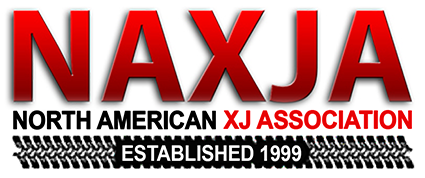Just Differentials
Differentials and Axles!
- Location
- Washington State
Differential and Gear Basics
We have a gear, RPM, and tire size calculator HERE.
If you have any questions about choosing the proper ratio for your vehicle, or breaking in gears let us know and we will be happy to help you.
What a differential does:
-Differentiates wheel speed from side to side to enable smooth cornering.
-STD open differential does not prevent wheel spin. When traction is lost, all power goes to the wheel with least traction. Traction scale 1 of 5
Traction:
-Limited Slip Differential (aka LSD, “Positraction”) - Uses clutches, cones, or helical gears and pre-load to prevent wheel spin. Increases traction significantly, smooth on the street, reasonably priced, but never 100% locked. Example: TrueTrac, Eaton Posi, Auburn LSD, TracLok, Torsen
Off-Road 3 of 5 On-Road 5 of 5 Average price $300-600
-Auto / Mechanical Locker - Uses mechanical teeth, cams, springs, to ensure 100% lockup when throttle is applied. Disengages around corners. Increases traction significantly, reasonably priced. Clunks & Pops on corners. Examples: Detroit Locker, Lock Right, Powertrax.
Off-Road 5 of 5 On-Road 2 of 5 Average price $300-700
-Selectable Locker – Can be selected from open to 100% locked with flip of switch, Actuated via Compressed Air or Electro-magnet. Best of both worlds. More Costly, some also require an additional compressor system. More complex. Examples: ARB Air Locker, TJM Pro Locker, Eaton E-Locker, Auburn ECTED, OX Locker, Off-Road 5 of 5 On-Road 5of 5 Average price $750-1075
Re-Gearing:
The Ring & Pinion is the main set of Gears inside the Axle. Four wheel drives have 2 (1 front, 1 back). Vehicle manufacturers choose particular gear ratios based on a number of factors, that all revolve around a bone stock vehicle’s weight, tire size, horsepower, torque range, etc. They choose ratios to offer a mix of good performance and economy. This day and age economy is generally favored. Even small alterations in tire size and added weight can drastically affect a vehicles drivability, performance, and economy.
This is especially important for off-road / overland type vehicles. These vehicles tend to be heavily loaded with expedition and offroad enhancing gear like tents, fridges, bumpers, sliders, skidplates, winches, etc. Most of these vehicles also are running larger tires than stock. Also, most see a great deal of highway miles, making correct gearing even more important
It is a common misconception that re-gearing a vehicle is only for hardcore off-roaders or for huge oversized tires. Most of the late model vehicles we produce aftermarket ratio’s for are daily driven vehicles with slightly oversized tires. In an effort to improve fuel economy, late model overdrive transmissions are geared very high which means RPM’s are very low on the highway. When even a slightly taller tire is installed the RPM’s are reduced below acceptable levels that the engine was designed to run. This causes constant shifting out of overdrive, sluggish acceleration, poor economy and rapid wear on the transmission and other components.
By changing the ring & pinions in your vehicles differentials, you can match the ratio to the tire size to bring the RPM’s back to where the manufacturer intended. Typically it is recommended to select a ratio slightly lower (higher numerically) than what the math will tell you. This will help accommodate increased rolling resistance, wind drag, and added weight of aftermarket accessories and gear.
Differential Care & Break-In Information
New Gear Break-In:
All new gear sets require a break-in period to prevent damage from overheating. Any overloading or overheating will cause the gear oil to break down and the ring & pinion will fail. Please follow these guidelines to insure proper break-in.
-After light use for the first 15 to 20 miles it is best to stop and let the differential cool before proceeding.
-Avoid heavy acceleration during the break-in process.
-Nitro Gear warranty requires at least 500 miles before towing.
-Nitro Gear also requires towing for very short distances (less than 15 miles) and letting the differential cool before continuing during the first 45 towing miles.
-Nitro Gear recommends changing the oil after the first 500 miles. This will remove any metal particles or phosphorous coating that has come from the new gear set.
This may seem unnecessary but it is very easy to damage the differential by loading it before the gear set is completely broken in. The greatest damage results when a new ring & pinion has been run for several miles during the first 500 miles and the oil is very hot.
Any heavy use or overloading during the first 500 miles will cause irreparable damage to the gear set that can be determined by inspection of the gear set and will not be warranted
Posi-tractions:
Positraction chatter is normal for limited slip and positraction differentials. Both rear tires must measure the same height from the ground to the top of the wheel in order for the differential to function properly without premature wear. Limited slip additive or friction modifier for limited slip differentials must be used with the oil to reduce posi-traction chatter in the event that the oil is changed.
Lockers:
Mechanical locking differentials will bang & clunk during normal operation. Both rear tires must measure the same height from the ground to the top of the wheel in order for a locking differential to work properly.
Gear Noise:
Some aftermarket (non OEM) gears are designed primarily for strength and may be noisy. This noise is especially inherent in vans and quiet passenger cars.
Again, if you have any questions or need help choosing the right ratio or differential, let us know!

